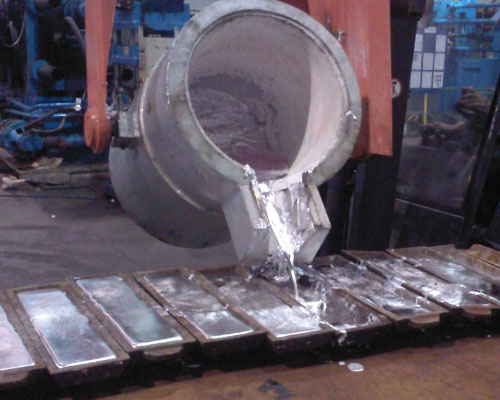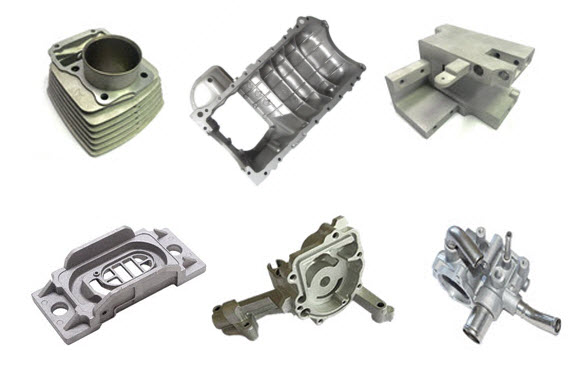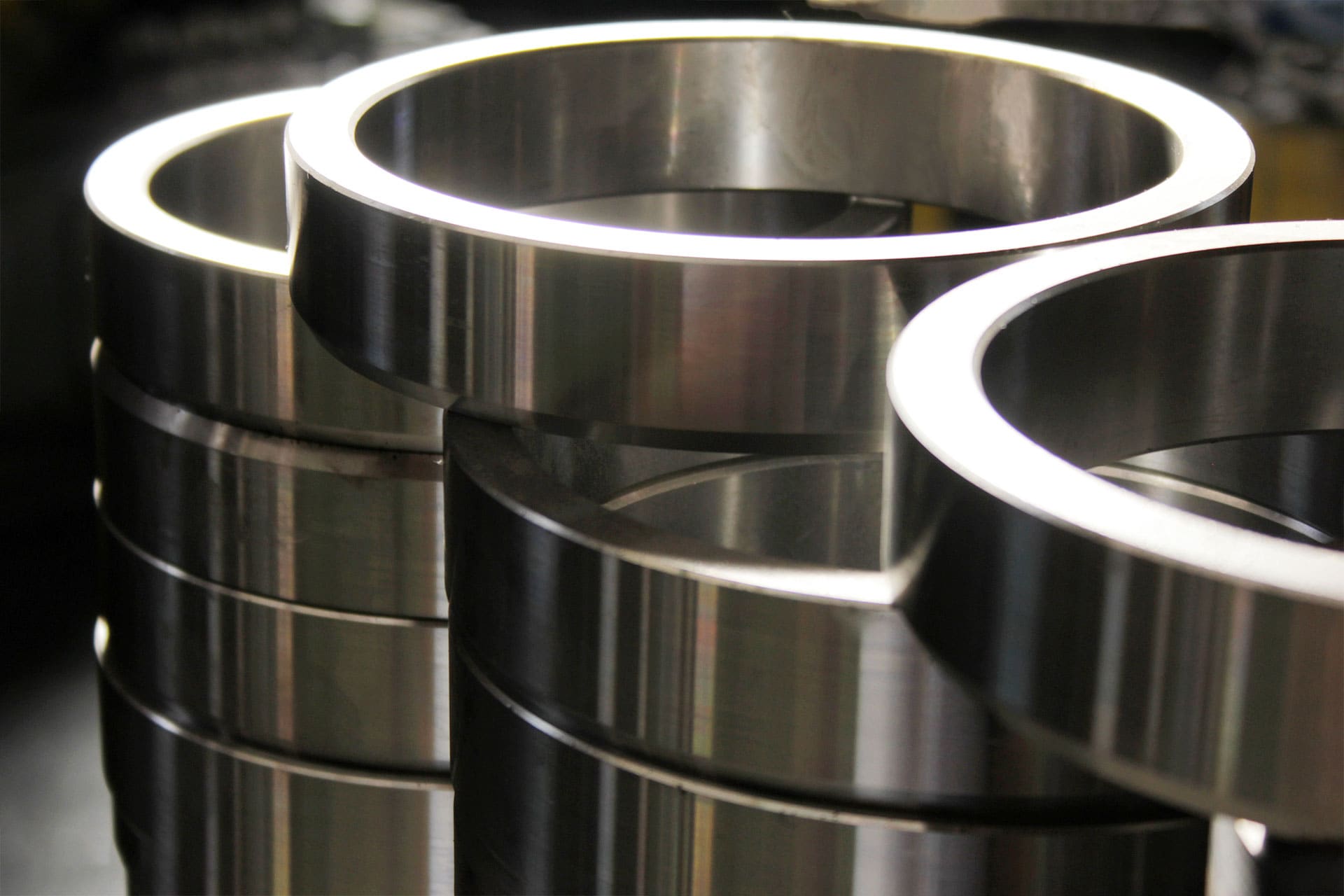Comprehending the Role of Aluminum Foundry in Creating High-Quality Steel Products
Aluminum factories are vital in the manufacturing of high-grade steel products. They employ numerous casting techniques, such as sand and pass away spreading, to attain accuracy and toughness. With rigorous quality assurance actions in place, these facilities guarantee that their items fulfill market requirements. As industries advance, the role of Aluminum foundries proceeds to adapt. This increases concerns about future technologies and sustainability techniques that might redefine their impact.
The Aluminum Spreading Refine: Techniques and Technologies
The Aluminum casting process has actually developed substantially, incorporating different strategies and advancements that enhance efficiency and product top quality. Commonly, techniques such as sand spreading and pass away casting were predominant; however, developments have actually introduced processes like investment spreading and low-pressure die casting. These developments enable producers to attain detailed layouts and tighter resistances, reducing material waste and enhancing overall efficiency.
In addition, the combination of computer-aided design (CAD) and simulation software permits more accurate modeling and testing, ensuring that potential concerns are determined early in the production cycle. In addition, developments in alloy formulations lead to improved mechanical homes and rust resistance
These developments not just streamline manufacturing however additionally promote sustainability by decreasing energy consumption and exhausts. As the market remains to accept brand-new innovations, the Aluminum casting procedure remains a vital element in producing top notch steel items that fulfill diverse market needs.
Applications of Aluminum in Different Industries
Aluminum's flexibility and positive homes make it a beneficial material throughout various markets. In the automotive industry, Aluminum is widely used for its light-weight characteristics, adding to enhanced gas efficiency and efficiency. The aerospace sector likewise advantages, as light weight aluminum's high strength-to-weight ratio improves airplane layout while maintaining security standards.
In construction, Aluminum is preferred for its durability and resistance to rust, making it suitable for home window frames, roof covering, and structural elements. The packaging market leverages aluminum's non-toxic nature and recyclability, especially in food and drink containers, ensuring safety and security and sustainability.
Additionally, the electrical industry employs Aluminum for its outstanding conductivity in electrical wiring and transmission lines. The durable goods field uses Aluminum in items varying from kitchen utensils to electronics, stressing its flexibility. Aluminum plays an important function in boosting capability, performance, and sustainability throughout varied applications.
Benefits of Making Use Of Aluminum Over Various Other Steels
While lots of metals are employed in various applications, Aluminum stands out as a result of its distinct combination of residential properties that use a number of advantages over other materials. Its light-weight nature considerably minimizes transport prices and power consumption, making it optimal for industries such as automotive and aerospace. Light weight aluminum's outstanding rust resistance boosts durability, extending the life of products and reducing maintenance needs. Furthermore, it displays high thermal and electric conductivity, making it appropriate for electrical and thermal monitoring applications.
The steel's pliability enables for elaborate layouts and complicated shapes, supplying flexibility in producing procedures. Additionally, Aluminum is 100% recyclable without loss of high quality, advertising sustainability and reducing environmental influence. Metal Castings. These qualities, integrated with its relatively affordable contrasted to other steels, setting Aluminum as a preferred selection across numerous fields. In general, the benefits of Aluminum contribute to its enhancing popularity in the production of premium steel items

High Quality Control Procedures in Aluminum Foundries
Quality assurance measures play a vital role in the Aluminum Foundry procedure, ensuring that the end products meet rigorous industry standards and customer expectations. These measures generally begin with material evaluation, where raw Aluminum is assessed for purity and structure. When the casting process begins, temperature control is vital; keeping ideal molten steel temperatures Learn More protects against issues such as porosity and shrinkage.
In addition, non-destructive screening (NDT) methods, consisting of ultrasonic and radiographic inspections, are used to find interior defects without harming the spreadings. Aesthetic inspections are additionally carried out at different phases to identify surface area imperfections.
In addition, adherence to well-known high quality monitoring systems, such as ISO requirements, is vital for preserving consistency and traceability throughout the manufacturing procedure. Routine audits and employee training on high quality standards add to an overall society of excellence, ensuring that the products not only fulfill however go beyond client assumptions in performance and durability.
The Future of Aluminum Foundries: Patterns and Sustainability
As the Aluminum Foundry sector develops, arising trends and a concentrate on sustainability are reshaping its landscape. Boosting need for resilient and light-weight products in sectors like automotive and aerospace drives technology in Aluminum casting techniques. Advanced modern technologies, such as synthetic knowledge and automation, are enhancing manufacturing efficiency and precision while lowering waste.
Sustainability is coming to be a paramount worry, prompting factories to carry out eco-friendly techniques, consisting of recycling Aluminum scrap and making use of renewable resource resources. The change in the direction of circular economic climate concepts urges factories to lessen environmental effect while satisfying consumer expectations for sustainable products.
Additionally, regulatory pressures are pushing the market in the direction of cleaner operations, fostering cooperation in between makers and ecological companies. As these fads merge, the future of Aluminum shops will likely be identified by a dedication to top quality, sustainability, and effectiveness, ensuring their relevance in an open market.
Often Asked Inquiries
What Are the Ecological Influences of Aluminum Foundries?
Light weight aluminum shops add to environmental influences via energy consumption, greenhouse gas emissions, and potential air and water pollution. Additionally, mining bauxite for Aluminum can result in habitat damage and soil deterioration, affecting neighborhood environments.

Just How Do Foundries Make Certain Worker Security Throughout Production?
Factories implement extensive safety and security protocols, consisting of safety equipment, ventilation systems, and routine training. They perform risk evaluations and keep security criteria to reduce threats, making sure a safer working atmosphere for go to the website staff members throughout the manufacturing process.
What Qualifications Should an Aluminum Foundry Have?
A light weight aluminum Foundry must possess certifications such as ISO 9001 for top quality monitoring, ISO 14001 for environmental monitoring, and OSHA conformity for safety and security standards. These accreditations ensure adherence to market guidelines and dedication to top quality and safety and security practices.
How Does Aluminum Recycling Affect Foundry Workflow?
Aluminum recycling considerably boosts Foundry operations by supplying an affordable basic material resource, minimizing energy usage, and decreasing environmental influence - Metal Castings. It More hints likewise urges sustainable practices, allowing factories to maintain competition in a quickly evolving market
What Prevail Flaws in Aluminum Castings?
Typical problems in Aluminum spreadings consist of porosity, shrinkage, additions, and surface blemishes. These problems can occur from incorrect mold and mildew design, inadequate putting techniques, or contamination during the melting and spreading procedures, impacting overall item high quality.
